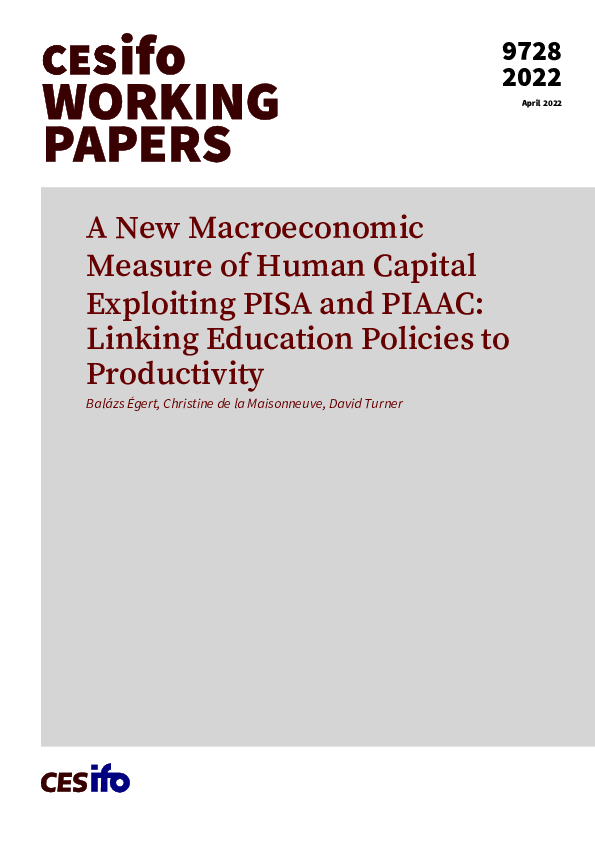A New Macroeconomic Measure of Human Capital Exploiting PISA and PIAAC: Linking Education Policies to Productivity
CESifo, Munich, 2022
CESifo Working Paper No. 9728

This paper provides a new measure of human capital using PISA and PIAAC surveys, and mean years of schooling. The new measure is a cohort-weighted average of past PISA scores (representing the quality of education) of the working age population and the corresponding mean years of schooling (representing the quantity of education). In contrast to the existing literature, the relative weights of each component are not imposed or calibrated but directly estimated. The paper finds that the elasticity of the stock of human capital with respect to the quality of education is three to four times larger than for the quantity of education. The new measure has a strong link to productivity with the potential for productivity gains being much greater from improvements in the quality than quantity component of human capital. The magnitude of these potential gains in MFP is considerable but the effects materialise with long lags. The paper simulates the impact of a particular reform to education policy (pre-primary education) on human capital and productivity to demonstrate the usefulness of the new measure for policy analysis.
Economics of Education
Fiscal Policy, Macroeconomics and Growth